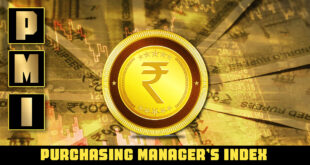Resource Efficiency Circular Economy Industry Coalition (RECEIC) was recently launched on the sidelines of the fourth G-20 Environment and Climate Sustainability Working Group (ECSWG) and Environment and Climate Ministers’ meeting.
Circular Economy
- Circular Economy aims to eliminate all forms of junk from the market.
- Junk refers to any inefficient utilization of resources or assets.
- It is a restorative approach to production and consumption that involves redesigning, recovering, and reusing products and materials to reduce environmental impacts.
- Circular models seek to eliminate four different kinds of waste:
Wasted Resources:
- Materials and energy that cannot be effectively recycled over time
- Products and assets that are underutilized
- Products that prematurely end due to planned obsolescence or a lack of second-life options
- Components, materials, and energy not retrieved from waste streams

Significance of Circular Economy
- The transition to a circular economy could result in an additional US$ 4.5 trillion in global economic output by 2030.
- India’s circular economy development route might generate an annual value of US$ 218 billion (Rs 14 lakh crores) by 2030 and US$ 624 billion (Rs 40 lakh crores) by 2050.
- By 2030, India is expected to be the world’s third-largest economy, accounting for approximately 8.5% of the global GDP.
- The recycled Polyethylene Terephthalate (PET) plastic industry in India is estimated to be worth around US$ 400-550 million.
- In India, PET is recycled at a rate of 90%, which is higher than in Japan (72%), Europe (48%), and the United States (31%).
- Thus, there are enormous opportunities for a circular economy in India.
What India can achieve through circular economy?
- With its existing IT dominance and pool of tech talent, India is well-positioned to use digital technology to create innovative and cutting-edge circular businesses.
- This has the potential to accelerate India to the forefront of the global circular economy revolution.
- Early success compared to global economies
- India is one of the fastest developing economies and can easily take up opportunities to use circular methods of production, building sustainable designs.
- As mature economies have a linear lock-in and switching costs would be costly and time-taking.
- Therefore, as an emerging nation, India has a competitive advantage over mature economies.
Benefits of Circular Economy
- By lowering emissions, consuming fewer natural resources, and producing less trash.
- Benefits for the local economy:
- By encouraging production models that rely on the reuse of nearby waste as raw material.
- Drives employment growth:
- It fosters the development of a new, more inventive, and competitive industrial model, resulting in higher economic growth and more employment.
- Promotes resource independence:
- Reusing local resources can reduce reliance on imported raw materials.
Concerns:
- Despite the Government’s policy efforts the progress has been underwhelming.
- One of the major contributing factors is lack of a clear vision towards the end-goal of India’s circular economy mission and gaps in actual implementation of the policies.
Industry is also reluctant in adopting the circular economy model due to:
- supply chain limitations,
- lack of incentives to invest,
- complex recycling processes and
- lack of information to support participation in reusing/ recycling/re-manufacturing processes.
Efforts are made at the very end of value chains, resulting in sub-optimal economic and environmental outcomes.
Way forward:
- legislative mandates for the procurement of recycled/ secondary raw materials in the initial stages of the production cycle,
- developing a unified legislation addressing the circular economy from a regulatory perspective.
SOURCE: THE HINDU, THE ECONOMIC TIMES, PIB
 Chinmaya IAS Academy – Current Affairs Chinmaya IAS Academy – Current Affairs
Chinmaya IAS Academy – Current Affairs Chinmaya IAS Academy – Current Affairs



